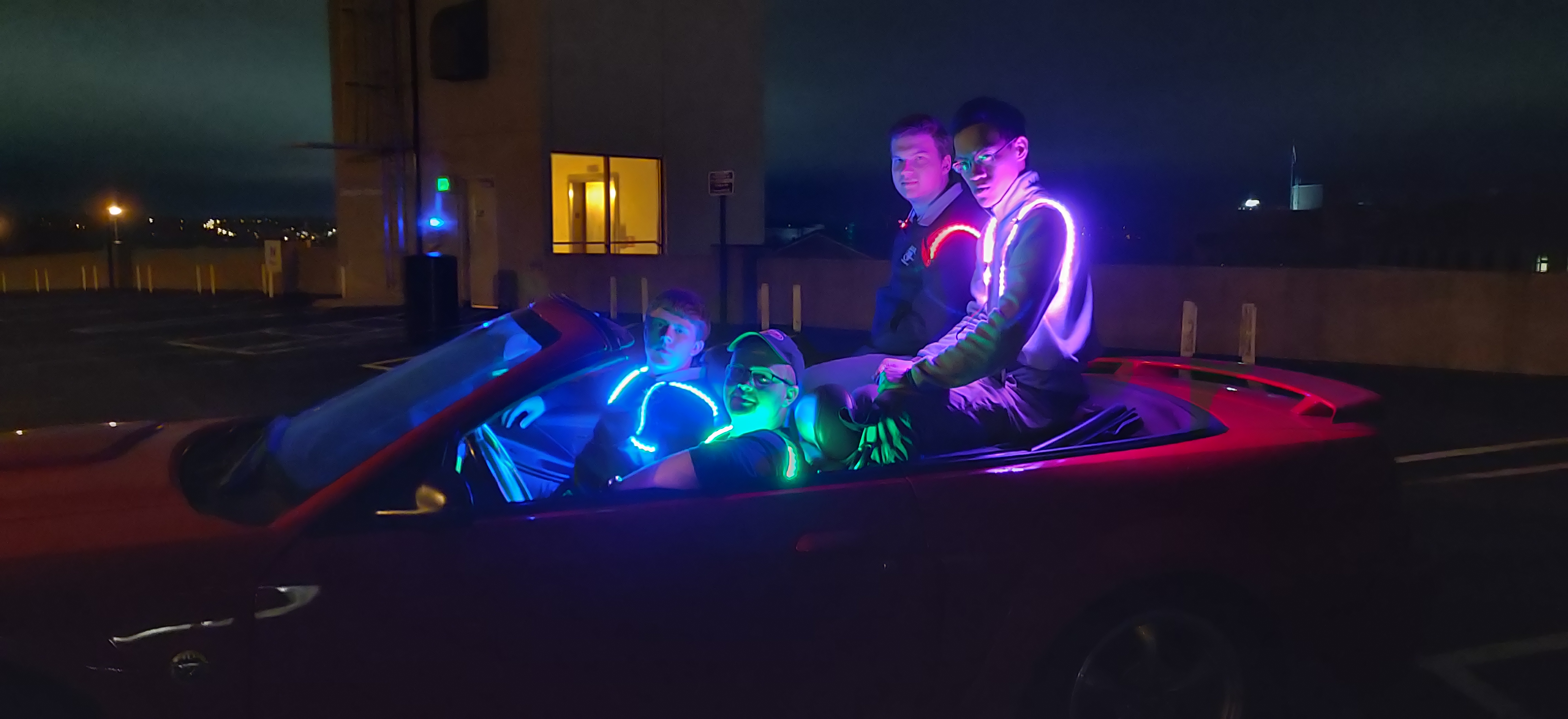Senior Design Spotlight - Team ABCD

An important part of senior year is ECE 49022: EE Senior Design Projects. Teams are tasked with taking on a challenging engineering project that incorporates their previous coursework. Students decide on a project and then design and test a system, component, or process to meet the goals they have set.
“We went through several different possibilities before deciding on Bluetooth broadcast,” he says. “So there’s one location that tells everything else what to do.”
Wilson says Team ABCD’s system uses Bluetooth Low Energy (BLE) to broadcast information to the network of packs worn by the marchers on the field. He says the information about what color the nodes should be at different points in the show can be programmed ahead of time.

“At show time what happens is that the broadcast station will send out a signal to say “We’re in set 1.” Which means all of the nodes know exactly what color they should be during set 1,” says Wilson. “Whoever is running the broadcast station will transition into set 2 at the appropriate time. So it’s very sequential, and you can actually change what set you’re on throughout the show.”
Tung says the system works well enough that they could actually pitch it to the Purdue Marching Band.
“It’s definitely better than the system they’re currently using,” he says. “We’ve estimated that the per-unit cost would be $13-$15.”
Tung says the senior design process was a confidence boost for the entire team.
“It’s showing you that all the things you’ve learned in Purdue ECE is enough to be able to sit on a project with other people and build something that completely works and is something that we’re ready to pitch to a real customer.”
